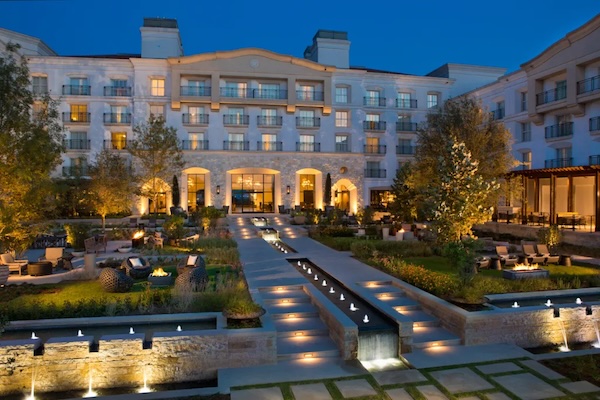Hilton is typically one of the first public hotel companies to report its quarterly earnings, taking on the role as the proverbial canary in the coal mine. Its third-quarter results are a warning.
Hilton’s Q3 global RevPAR declined 1.1% compared to the same time a year ago (though tougher comps had a drag on results) and marks two consecutive quarters of negative RevPAR. The Middle East and Africa region was the one exception, where RevPAR increased 9.9% YOY, driven by robust intra-regional travel growth for both the business and leisure segments.
Full-year 2025 RevPAR is projected to be flat to an increase of 1% compared to 2024.
Net income was $421 million for the third quarter.
In the quarter, Hilton approved 33,000 new rooms for development, bringing its development pipeline to 515,400 rooms as of September 30, 2025, growth of 5% from the same time a year ago. It also added 24,800 rooms to its system, resulting in 23,200 net additional rooms for the third quarter, which contributed to net unit growth of 6.5% from September 30, 2024. For the full year, Hilton expects net unit growth of between 6.5% and 7% percent in 2025 and 6% to 7% over the next several years.
In typical fashion, Hilton CEO Chris Nassetta looked to lift above the noise, but acknowledged the clamor, citing declines in international inbound travel to the U.S. and declines in government related-travel. Still, he is optimistic. “that in the U.S., lower interest rates, a more favorable regulatory environment, certainty on tax policy and a significant investment cycle will accelerate economic growth and travel demand, and, when paired with limited industry supply growth, should drive stronger RevPAR growth over the next several years,” he said, adding that the ongoing development of data centers that stoke AI, midterm elections next year, the U.S. 250-year celebration and World Cup are all growth accelerators.
Hilton opened 199 hotels in the quarter with a continued focus and expansion of the its luxury and lifestyle brands, including the addition of the Conrad Hamburg, the luxury brand’s first in Germany, and the KROMO Bangkok, Curio Collection by Hilton, the brand’s first hotel in Thailand. In October, Hilton reached its milestone 9,000th property opening with the Signia by Hilton La Cantera Resort and Spa.
Conversions continue to be a focal point and vehicle of growth as new development remains stymied by higher interest rates and elevated construction costs. “New development construction starts in the U.S. were strong during the quarter,” Nassetta said, but remain below 2019 levels.

Also in the quarter, Hilton announced the launch of its 25th brand, Outset Collection by Hilton, a new collection that targets guests looking for boutique hotels with an independent identity and experience. It has more than 60 hotels in development.
An optimistic Nassetta is still a realist, understanding that hotel owners are feeling margins squeeze in a negative RevPAR environment. To succor that, Hilton introduced what it called a “first-of-its-kind program” that offers owners system fee reductions, many of which tied to hotel specific product and service quality scores. “The fee reductions will share the efficiencies we have gained through scale and technology with our owners, while reinforcing the need to continue maximizing the customer experience,” Nassetta said.
That customer experience will undoubtedly be impacted by artifical intelligence and Hilton, like its peers, is putting it high on its priority list. “[AI] will evolve and change and you have to be really agile with the speed at which this is moving,” Nassetta said.
Hilton talks about AI as both a way to increase efficiency and also engage the customer on the discovery and booking journey. “Historically,” Nassetta said, “you have antiquated ways of doing things that require a lot of people; there are different ways to do it and repurpose people to do higher value things. That can benefit our general and administrative [costs].”
The enormous distribution landscape is another implication for AI, and maybe the biggest. “We’re in the business of fulfillment,” Nassetta said. “We have 9,000 and growing hotels that we control rate, inventory and availability for. The only way you get it is through us. You either get it from us or you don’t get it, and we are in charge and in control of fulfillment, the actual experience for the customer.”
